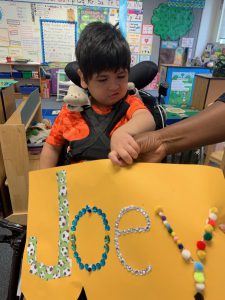 I found myself getting nervous before my opportunity to present the research on Joey’s progress at the Council for Exceptional Children’s DADD conference in January. Joey’s journey is unique, but as I scrolled through my prepared slides I wondered if I was on the right track. So much of my work with Joey has involved throwing off what I was taught in terms of behavioral approaches and meeting Joey where he asks to be met. Not what I plan for Joey to do, or what I’ve done with students in the past, but where Joey shows me he is ready to work. Although this is the right approach for Joey, and I truly believe in the approaches we take for him, I realized I was nervous about the response I would get. Sometimes it just feels too different than the otherwise straightforward approaches to teaching communication. The audience of this conference included many doctoral degrees and experts in the field. What if I was doing everything wrong, and everyone heard me say it aloud? [Read more…]
I found myself getting nervous before my opportunity to present the research on Joey’s progress at the Council for Exceptional Children’s DADD conference in January. Joey’s journey is unique, but as I scrolled through my prepared slides I wondered if I was on the right track. So much of my work with Joey has involved throwing off what I was taught in terms of behavioral approaches and meeting Joey where he asks to be met. Not what I plan for Joey to do, or what I’ve done with students in the past, but where Joey shows me he is ready to work. Although this is the right approach for Joey, and I truly believe in the approaches we take for him, I realized I was nervous about the response I would get. Sometimes it just feels too different than the otherwise straightforward approaches to teaching communication. The audience of this conference included many doctoral degrees and experts in the field. What if I was doing everything wrong, and everyone heard me say it aloud? [Read more…]
Knock Knock! Discovering the beauty of telling jokes on the AAC
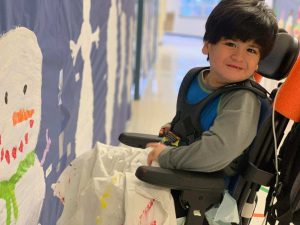 I have a love/hate relationship with knock knock jokes. For the love side, they are fun, silly, occasionally clever, and a great way to joke around with young kids. I’ve even introduced them as replacement behaviors when children want to engage with a peer but don’t know how. “Want to hear a joke?” is much better than “Our teacher is stupid and ugly” or simply pushing a peer to get their attention. So I know my fair share of knock knock jokes. On the hate side, once a child tends to learn a good knock knock joke they tend to use it repeatedly, expecting you to find it funny each and every time. And then there is that developmental window before children understand why the knock knock jokes are actually funny to other people. They create their own – “knock knock, who’s there? Cow? Cow Who? Cow cat dog dance with meeeee and the CHICKEN!” And you have to laugh even though it makes no sense.
I have a love/hate relationship with knock knock jokes. For the love side, they are fun, silly, occasionally clever, and a great way to joke around with young kids. I’ve even introduced them as replacement behaviors when children want to engage with a peer but don’t know how. “Want to hear a joke?” is much better than “Our teacher is stupid and ugly” or simply pushing a peer to get their attention. So I know my fair share of knock knock jokes. On the hate side, once a child tends to learn a good knock knock joke they tend to use it repeatedly, expecting you to find it funny each and every time. And then there is that developmental window before children understand why the knock knock jokes are actually funny to other people. They create their own – “knock knock, who’s there? Cow? Cow Who? Cow cat dog dance with meeeee and the CHICKEN!” And you have to laugh even though it makes no sense.
So when Joey discovered knock knock jokes on his device I celebrated ecstatically and braced myself for what was to come. [Read more…]
Who Reads? Creating new routines for learning new skills
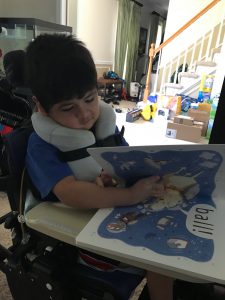 Joey turned to me, putting his eyes directly in line with mine. “Miss Ann-Bailey. Teacher” he said, smiling. While this is true, I quickly recognized the attempt to negotiate with me. My friend, it is only because I am your teacher that we are having this battle, I explained. And I’m holding firm because I know you can do it. One day you will read many books all to yourself. Right now, we are reading this book together. Now, find “IS”.
Joey turned to me, putting his eyes directly in line with mine. “Miss Ann-Bailey. Teacher” he said, smiling. While this is true, I quickly recognized the attempt to negotiate with me. My friend, it is only because I am your teacher that we are having this battle, I explained. And I’m holding firm because I know you can do it. One day you will read many books all to yourself. Right now, we are reading this book together. Now, find “IS”.
He gave me a similar look to what he gave me years ago when we first started using the eye gaze and I insisted on him using the device instead of simply looking at what he wanted and laughing. Back then, he believed he had a communication system that worked for him. The idea that I would change this system made him mad. Eventually, Joey and I worked through it, and now he uses his device like a pro. To get here though, he needed to bend and I needed to bend until we found our middle ground. [Read more…]
When Ideas Don’t Work…
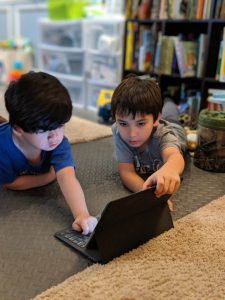 Shortly after Christmas I was meeting with Joey and noticed the newly opened card game – Sleeping Queens- sitting on his family’s couch. It happened to be a game I love, and one that I not only play with my own children, but also with many of the children I work with. I’ve never worked with a child who didn’t like this game. Joey’s older brother was also home from school, and I jumped on the chance to turn this into a meaningful learning and bonding moment.
Shortly after Christmas I was meeting with Joey and noticed the newly opened card game – Sleeping Queens- sitting on his family’s couch. It happened to be a game I love, and one that I not only play with my own children, but also with many of the children I work with. I’ve never worked with a child who didn’t like this game. Joey’s older brother was also home from school, and I jumped on the chance to turn this into a meaningful learning and bonding moment.
The game has dragons, knights, queens, and kings – all vocabulary that Joey has. It also has number cards and encourages the players to make number sentences in order to get new cards (4 + 2 = 6, so that if you have the cards 4, 2, and 6, you can play all three). My mind was spinning. I could encourage Joey’s counting, adding, and back and forth turn taking and game play. All while engaging him in a game other kindergartners like. Sure, we’d have a lot to problem solve, but if we could figure out how to make this work there could be all sorts of opportunities to explore.
Sometimes, I need to keep my ideas to myself. [Read more…]
Analyzing Data and Making Decisions
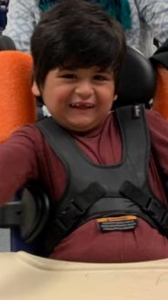 I have spent the last few hours analyzing Joey’s data over the last year and looking at trends and patterns. I have the opportunity to present Joey’s journey and the data of his progress at both the DADD Annual Conference in January 2020, and at the Council for Exceptional Children’s Annual Conference in February, 2020.
I have spent the last few hours analyzing Joey’s data over the last year and looking at trends and patterns. I have the opportunity to present Joey’s journey and the data of his progress at both the DADD Annual Conference in January 2020, and at the Council for Exceptional Children’s Annual Conference in February, 2020.
Previously, Joey’s data was fairly remarkable. The last time I had the opportunity to present on Joey’s work he was 4 and a half. He had recently made impressive progress on the number of words he generated in a ten minute time sampling, and the graph this created was remarkable. When I went in and added the 2019 data into the graph, I had a moment of disappointment. I no longer have that beautiful uphill climb I’d seen in 2018.
Instead, it is more of a mountain range – with peaks and valleys, and currently, what seems to be a decline.
What’s going on? [Read more…]
- « Previous Page
- 1
- …
- 9
- 10
- 11
- 12
- 13
- …
- 38
- Next Page »


